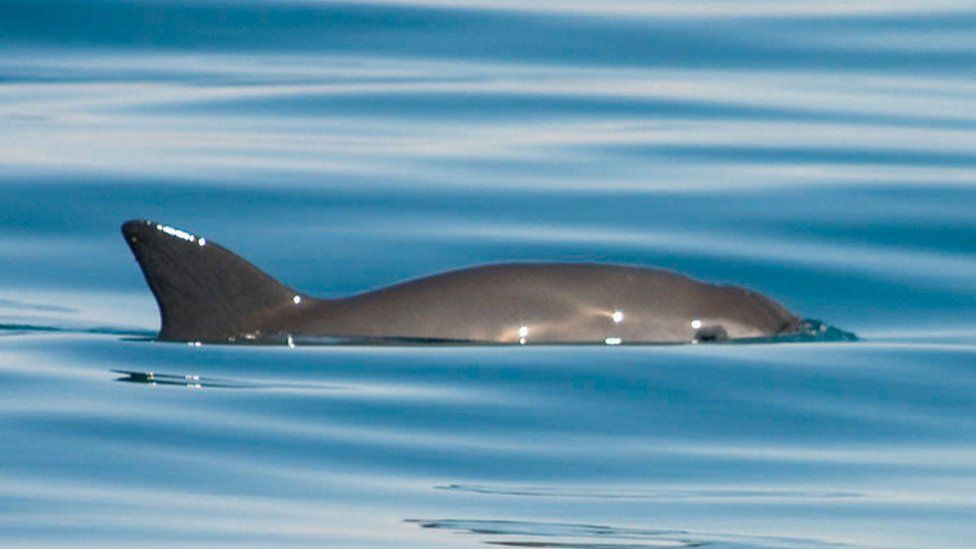What are the most endangered animals in the world?
- Published

The death of the world's last male northern white rhino has rendered the species "functionally extinct".
The only hope of reviving the population is through scientific intervention via IVF.
It is a "uniquely bad situation", according to Colin Butfield, head of campaigns at conservation charity WWF.
The vaquita - a very rare porpoise discovered in 1958 - and the Javan rhino are most in danger of going the same way.
But many other species - including the Sumatran rhino, black rhino, amur leopard, forest elephant and Bornean orangutan - are also considered critically endangered, some with fewer than 100 left.
The International Union for Conservation of Nature (IUCN) produces a "Red List" dividing species of plant, mammal, bird, amphibian and marine life into seven categories from "least concern" up to "vulnerable", "endangered", "critically endangered" and "extinct".
It currently considers 5,583 to be critically endangered.
And at least 26 were newly considered critically endangered in 2017, having been in a less severe category the year before.
In November 2016, the IUCN estimated there were about 30 remaining vaquita and they were likely to be extinct within the decade.
It's not always possible to give an exact number when it comes to animal populations, but the organisations that provide data to the IUCN use a range of methods to produce best estimates.
When counting land mammals, conservationists will use a combination of:
- GPS trackers
- disguised cameras that identify individuals' distinctive markings
- traces of kills
- faeces
- paw marks
- scratches on trees
They will then do a calculation using this information alongside estimates based on things such as the availability of prey and how many of a species could be sustained in a given area.
But calculating how many members of a species there are is not always uncontroversial.
Every year, new species are discovered.
That's not adding to the stock of the world's creatures - we're still losing wildlife at a rapid rate - but it does show how difficult it is to know exactly how many species are endangered, how big those species are and which are most under threat.
Campaigners say some species will be extinct before we even know they exist.
The Brazilian spix's macaw is considered to be extinct in the wild, but in 2016 a lone bird was spotted.
When it comes to assessing how endangered a species is, it's not just about numbers, though.
How do we decide how endangered a species is?
- Are they all living in one area - and therefore more likely to be wiped out by a single cause - or are they geographically spread out?
- How long is their reproductive cycle and so how quickly could their population recover if there were enough breeding pairs?
- What are the range of threats they face?
- How genetically diverse is the population?
- How threatened is their habitat?
A species with 500 animals left could be considered more endangered than one with only 300 left if that species is localised to one area and has a long reproductive cycle meaning the population cannot quickly grow.
Compare creatures living in tropical rainforests with more temperate forests.
In a tropical rainforest, there will be more species that don't exist anywhere else.
If something happens to a single river system, a whole species can be immediately wiped out, regardless of how big that localised population was, and that then has a knock-on effect on other species in the same system.